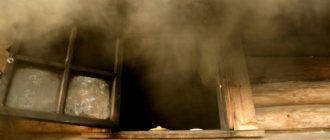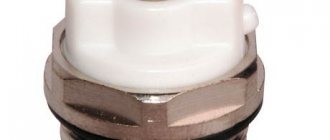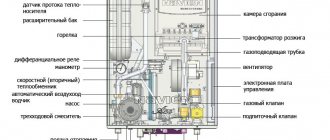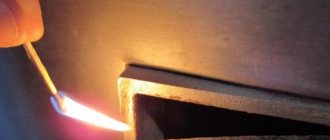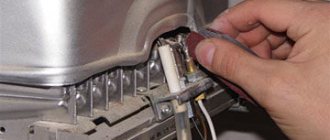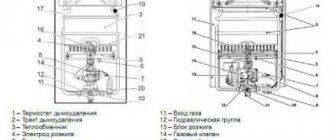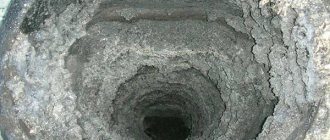The stove always served faithfully, but suddenly it started smoking. This is especially often observed when opening the ash pit or when the owner adds a new batch of firewood.
What is the reason why the stove smokes when the door is opened and how to properly heat it so that the smoke does not enter the living room. The most common reasons and advice from experienced stove makers.
Backdraft - Temperature and Humidity
Why does the stove smoke into the house?
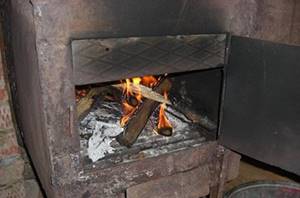
The natural extraction of flue gases through the chimney is based on the laws of physics. Of primary importance here are the temperatures indoors and outdoors, as well as the difference between them.
Poor traction is the scourge of warm weather in the off-season. For example, after a summer of inactivity, it takes special skill to light the stove in the fall so that smoke does not enter the house.
Also, the air can “stay” even in cold weather if the owners left the house and it froze. If the temperatures inside and outside are equal, there will be no draft.
Humidity can also play a role. For example, when slanting downpours occur and water enters the pipe, this upsets the temperature balance and the draft worsens.
In warm weather, or in a frozen house, paper is burned for kindling. It needs to be placed as far into the oven as possible; if this does not help, then into the far well through the cleaning door. Closer to the pipe, make a small fire made of paper or small wood chips. This is necessary in order to warm up the brick. Warm air will rise and draft will be established.
In hot weather, it is extremely difficult to establish traction.
I cooked a potbelly stove in the garage, but it smokes a little when you load firewood: what could be the reason?
What could be the reason? Pipe cross-section 180 mm, height difference 4 meters. dry firewood. The door is really the size of a firebox. Could this be the cause of the smoke?
Maybe the door is located high, that is, the smoke rising up goes both into the chimney and into the door. Another reason for smoke is that the chimney is installed in the wrong place on the roof; the wind can blow back, even if the pipe is higher than the ridge. For example, if there is a taller building nearby. A chimney cap on the top of the pipe will help correct the situation.
A case from my practice: There was a stove with a high chimney of 150 mm, it was located at the bottom of the roof slope and although it ended at the level of the ridge, there was not much draft in the wind. Extending the head by 1 meter helped.
My neighbor in the country had a similar story with an ordinary stove. He worked as a director at a thermal power plant. And naturally he considered himself a specialist and had a special education. But I switched the stove four times, and it kept smoking or just went out. I was simply surprised when I saw how he showed that the stove was smoking. And everything was very simple: he tightly closed the vent and naturally, when the door was closed, the stove went out, and when he opened the door, smoke entered the room.
So the fact that you have a large door, as follows from the explanation, may well be the reason that the stove is smoking. So even if the firewood is dry and the chimney is high, it turns out that this is not enough. Well, specifically it looked something like this.
As you can see, the vent is simply closed.
We can immediately say that the diameter of the chimney is narrowed, and the length of the chimney may be too long, but the latter is not necessary. During the normal process of burning wood, with the ashtray open, there should be a vacuum in the firebox, and the firebox door should be closed. The vacuum in the furnace is ensured by the lifting force of the flue gases, which is greater the higher the temperature of the flue gases and the greater the volume of flue gases leaving the furnace. Therefore, with a small diameter of the chimney, the lifting force of the flue gases is less (the volume of gases leaving the furnace is smaller); in addition, with a small diameter, but a large length of the chimney, the flue gases manage to cool by a noticeable amount before leaving the chimney, which also leads to reducing the lifting force of flue gases. The last reason: there is no natural draft in the pipe due to the lack of air at the entrance to the furnace (the room is tightly sealed), but in this case the combustion will stop altogether.
Wind

A temporary cause of backdraft can be the wind, the direction and strength of which “drives” the smoke back into the chimney. Tall trees or buildings located near the house can contribute to this.
Install an umbrella or deflector on the top edge of the pipe. These devices significantly improve draft, protect from rain and prevent the wind from blowing smoke back into the chimney.
To date, many deflector designs have been developed. There are rotating models that are themselves installed by the force of the wind so that there is no interference with the smoke.
Many people are interested in the question: how to line an iron stove with bricks? Read useful information in our article. For information on self-repair of Ariston water heaters, see here.
Read about winter kits for air conditioners at this link.
Why there is no draft in the chimney: reasons for its absence
There are two fundamentally different situations:
- there was no normal traction initially;
- over time, the traction force weakened, and then completely disappeared (or is insufficient).
The reasons for their occurrence are associated with a number of factors, which we analyzed and combined into key groups - according to the nature, degree, and consequences of their impact. Next, we will look at the most important points and find out how to prevent each of them or eliminate their consequences.
Incorrect laying of a stove or well

An important condition for good smoke removal is sufficient chimney clearance. The pipe must be at least 15 cm in diameter (for a sauna stove - 10 cm).
During laying, the stove maker rubs the inner surface of all wells and pipes with a damp rag. If possible, all sharp internal corners are trimmed and turns are smoothed out. This creates a smooth inner surface along which smoke can easily move upward. This is done as the furnace is being laid. But you cannot plaster the inside of chimneys.
Any turn or additional well is another obstacle in the path of smoke. Therefore, the length of the pipe and its location on the roof must be adequately designed for the design of a particular stove.
It is also important that the entrance to the first well (inside the firebox) is not lower than the top edge of the door. Otherwise, there is a possibility that every time the fuel chamber is opened, smoke will flow into the room.
The stove maker's mistakes come at a cost. Something in the design can be corrected only by moving part of the stove, or maybe by completely rebuilding it.
A tall, straight pipe with a smooth inner surface can be a salvation if minor miscalculations are made and the draft is weak:
- If located close to the ridge, the pipe should be at least 50 cm higher than it.
- When located 1.5 - 3 m from the ridge, the height of the pipe is allowed to be level with the ridge or higher.
- The pipe can only be slightly lower than the ridge if it is located more than 3 m from it.
- A chimney height of 5 m or more is capable of providing full draft.
- Under no circumstances should the chimney be assembled from elements of different sections!
It is advisable to make a pipe with a round cross-section. In the corners of rectangular smoke extractors, unnecessary turbulence is created, and soot formation occurs more readily.
Metal pipes “suffer” from deteriorating traction more often than brick and asbestos pipes. This happens because the metal heats up quickly and cools down just as quickly on a frosty day. Insulation with non-flammable material saves the situation.
Why does the stove smoke?
I made a homemade stove, similar to a potbelly stove, but only rectangular: height 60, width 60, depth 80. The vent is located at the bottom, everything is as it should be, but for some reason the stove smokes. Maybe the vent is located high, because the stove is on bricks or The pipes (chimney) are too thin (75mm), I don’t understand anything. Can someone tell me what I did wrong and how to fix it?
Is there anything going down the pipe? What is the height of the pipe? Are there horizontal sections? Are there plastic (sealed) windows (meaning: if you open the window, it continues to smoke?
clon wrote: The blower is located at the bottom, everything is as it should be, but for some reason the stove smokes.
Fill the ash pit with bricks and clay 1/3 the size of the firebox
2clon IMHO, either the pipe is too narrow or the blower is too large. In my potbelly stove (purchased), when the vent is completely open, the wood tends to fly out into the chimney. The pipe is straight, standard (100 mm), height approximately 4 m. The stove stands at a height of 0.5 m from the floor. Something is wrong with your chimney - can I have a diagram with dimensions?
Burrdozel, yes, it pulls into the pipe. The height of the pipe is 3 m. There is a horizontal section where the pipe exits from the stove through the wall to the street, the length is 40 cm. If you open the window, it still smokes. But there is one caveat when there is a wind in a certain direction, it pulls well and there is no smoke. The bachelor tried to put bricks in the ash pit with no results. sansan21 I also assume that the problem is in the chimney. Maybe I’ll draw a diagram later.
. Or maybe the height of the firebox is too small. you have a stove height of 60 minus the height of the ash pan, so 40 cm is left, and the depth is 80, so the smoke is blowing wherever it wants
summary - turn the stove 90 degrees
Probably 3m in height will not be enough. This is indirectly indicated by the thrust at a certain wind. That is, two factors: the pipe is narrow and the height of the chimney is small. Try adding a pipe, even a drainage one, will the draft improve?
Try to take a walk around this site: “> There are answers to almost all questions, but it’s not easy to find them in the sea of useful information. You can also ask your own question if you don’t find the answer yourself. Get your answer from a real specialist.
The pipe must be higher than the roof ridge.
The cross-sectional area of the pipe must be larger than the area of the blower. It is advisable to make the pipe (as mentioned above) higher or approximately level with the ridge (depending on the distance to the ridge), since otherwise the turbulence after the ridge will create an area of high pressure just above the pipe, which does not contribute to traction.
clon wrote: Bachelor, I tried putting bricks in the vent, no results.
We should not put bricks in the ash pit, but lay them! Or cover up (weld up the holes) that are located behind the axis of the pipe. Your draft goes through the blower, knocking out fire and smoke through the firebox
2clon The point of the Bachelor’s advice is to shorten the grate if it stretches along the entire length (80 cm) of the stove. Under no circumstances should he go behind the pipe (or better yet, not reach it)!
sansan21 Exactly, at one time in the 90s, our people were cooking potbelly stoves and, due to inexperience, faced this problem, it was the shortening of the vent that saved them. clon did not indicate another defect of the “defective” stove. If it flares up and at this moment you open the firebox and add firewood, you can singe your face a little - the flames rush out. Even then, I pointed out an error in the design to them; those who corrected it were happy.
I tried to extend the pipe, about 2 meters, with no result. Maybe the location of the blower affects it, because the stove itself is not on the floor, but raised 30-40 cm from the floor, and the blower turns out to be even higher. Maybe that’s why there is no draft? What do you recommend?
clone wrote: too thin (75mm), I don’t understand anything.
Is there no way to upgrade to a larger section? At what height does the chimney pipe exit the building? Is the pipe wall thick?
Does it smoke constantly or only until it warms up? Maybe they were greedy with the “turns”, but did not provide for the ignition valve.
Ilya Morozov wrote: The pipe must be higher than the ridge of the roof.
Not necessary. Depends on how far the chimney is located on the roof from the edge of the ridge. There are corresponding SNiPs that say that the further from the ridge, the lower the head can be. Here is an example - " > " >
It's a pipe. What is 75 mm? If it becomes overgrown with coke, what will remain there? You need to switch to a larger diameter. Skates, turns, etc. only after that. The stove is like a locomotive, and the pipe is like spaghetti. Doesn't burn.
vadim 08355 wrote: It's a pipe. What is 75 mm? If it becomes overgrown with coke, what will remain there? You need to switch to a larger diameter. Skates, turns, etc. only after that. The stove is like a locomotive, and the pipe is like spaghetti. Doesn't burn.
I completely changed the outlet and the pipe itself to 100mm and the problem disappeared. Thanks everyone for your help.
For a potbelly stove of this size, you need a 110mm pipe, otherwise with bad wood (damp, with rotten wood) or with drizzle or fog, it will smoke.
In winter, we welded a potbelly stove for the garage. It smokes terribly! And after warming up too. You can only heat with a closed ash pit, while the wood barely burns and there is no heat. The pipe is much higher than the roof, although there is a horizontal section of the pipe 70 cm. with a diameter of approximately 100 mm. And in the spring, when the frosts ended, there was no traction at all. I cleaned it and there was no improvement. I heard it needs to be insulated. tell me what the reason is.
Good evening everyone. Maybe someone can tell me. They put a simple stove for me in the washing bath. I encountered heavy smoke; when the firebox was opened, smoke and flames pulled into the room, even through the cracks in the door. Above the pipe, under the valve, there are stones on the grate. When kindling, I observe a situation - the door to access the stones is literally leaking water (sorry, I don’t know the terminology). Over the weekend I took out a couple of stones - all covered in black porous soot. The pipe (brickwork) goes to the ceiling, and already in the attic a stainless steel is inserted into the masonry. And yes, the pipe is 30-40 cm below the ridge. What can be done to improve traction. I attach a photo of the stove.
Soot and furnace wear
Why does the stove smoke in a private house? Other reasons

Even if the stove was perfect at the construction stage, over time the chimney clearance may narrow due to the build-up of soot. This is an inevitable process, so the oven is cleaned regularly. However, without wanting it, owners can significantly speed up the soot formation process.
What mistakes should you avoid:
- Do not use wet firewood, especially resinous wood.
- Do not over-burn large amounts of synthetic waste in the oven (cellophane, plastic, rags, rubber...).
- During the construction stage, do everything possible to ensure that the inner surface of the stove does not have protrusions, is smooth and uniform.
- Do not try to convert a regular oven into a pyrolysis oven.
Thrifty owners often strive to do the latter in order to save money. They limit the air supply, without opening the vent, but leaving only a small gap. The result is not combustion, but smoldering and decay. But a Dutch oven or a Swedish oven will never become pyrolyzed; by their nature, they should “hum” during combustion, and the vent can only be closed when there are coals left.
Particular attention should be paid to cleaning the stove for those stoves that are regularly fired with coal. This fuel quickly leads to the pipe becoming overgrown with soot (coal, like firewood, needs to be given a sufficient amount of oxygen to allow it to flare up properly).
By the way, the fact that it’s time to clean the stove can be indicated not only by the smoke in the house, but also by the sparks flying out of the chimney into the street. This happens when combustion does not occur in a furnace, but the soot itself burns in wells.
If after cleaning, the problem with traction remains or worsens, it is possible that soot fell on some area during cleaning, and the area remained uncleaned. With an aged stove, such a nuisance may occur as part of the brick falling off, which is not noticeable from the outside.
To be sure that the wells are clean along their entire length, you can make additional holes for cleaning. This is done using a hammer drill or a drill with a Pobedit drill bit.
Problems in the furnace design
If the stove still smokes even with the fire door open, you should think about the competence of the stove maker who installed it. The most common mistake of inexperienced craftsmen is not wide enough
. Its dimensions depend, in particular, on the power of the heating unit. For example, for a stove with a power of 3.5 to 5.2 kW, the chimney diameter must be at least 189 mm, and the cross-sectional area (if rectangular) must be at least 0.028 m². Otherwise, carbon monoxide will tend to escape not only through the pipe, but also through the firebox.
Presence of cracks
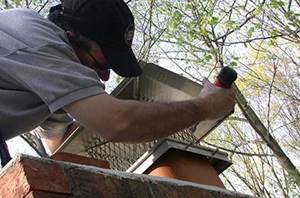
It's no secret that over the years the stove becomes covered with a network of cracks and cracks. Especially at the junction of clay and metal elements, for example, around a slab. Wells can also crack at the seams.
The cracks could remain in the place where a knockout brick is inserted for cleaning, or the vent and firebox doors have become loose over time.
Also, atmospheric phenomena sometimes destroy the outer part of the pipe on the roof.
It is possible and necessary to deal with cracks, because air is sucked in, its natural flow is disrupted, and at the slightest disturbance in draft for other reasons, smoke finds its way out, even with the door closed!
The cracks are sealed with clay mortar, similar to the one on which the stove is made. Deep cracks are widened using a knife or similar tool to allow the mortar to penetrate deeper between the bricks. Then the gap is moistened with water and sealed well. Small cracks can be whitened.
Pulls, but not there
If the stove has not been used for a long time, a “backdraft” effect may occur - a cold air plug accumulated in the chimney does not allow the warm flow to pass through, and smoke enters the room. What to do? Raise the temperature in the pipe! To do this, before adding fuel, open the dampers and throw burning paper through the cleaning door.
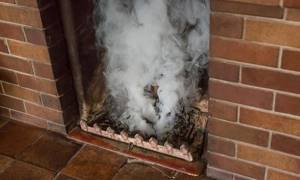
The smoke exhaust duct will warm up, the heated air will rise, and the draft will be restored. If this does not happen, the operation must be repeated again. But now the paper must be thrown directly into the pipe directly from the roof. After the fire goes out, light a torch in the firebox and see where the smoke goes.
We suggest you read: How to quickly dry firewood at home
If it’s outside, that means you can lay firewood. A special attachment, a deflector, will help prevent backflow. This is a cylindrical metal product that is installed on top of the chimney. Thanks to its design, the device creates an area of low pressure, increasing traction.
Ventilation
The chimney itself is a natural exhaust hood. In order to create upward movement of warm air, a full influx from the outside must be ensured.
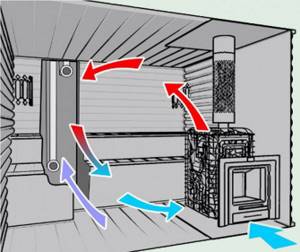
Oven ventilation
However, often, when installing a forced ventilation system, owners only perform forced exhaust (in the kitchen and bathroom, for example). If some factors have influenced the reduction in draft in the chimney, powerful forced exhaust through a separate channel will become an additional obstacle to the normal movement of smoke from the stove.
The second floor may compete with the chimney. If there is a staircase nearby and an opening to the top, air sometimes rushes there more readily, especially if at those moments when a window on the second floor opens.
Temporarily turn off the hood, close the windows on the second floor, open a window or door at the level of the stove so that fresh air enters the room. However, the other extreme should not be allowed - drafts.
The appearance of smoke due to incorrectly selected chimney dimensions
Another fairly popular cause of smoke is the incorrectly selected height of the chimney pipe, and this error usually occurs during the installation of all equipment. When installing a chimney in a garage or other building, it is important that its outer part, which is located on the street, has the necessary and sufficient height .
If the proportions are chosen incorrectly, then very often smoke comes out of the stove , which comes out when the door is opened, and the reason lies precisely in the chimney. If this error is detected, it is necessary to urgently correct it, for which purpose the structure is built up through the use of additional sections of pipe.
Other reasons
Smoke can enter the house if there is too much wood in the firebox and the entrance to the wells is blocked, and the fuel has not yet had time to ignite.
What to do here is decided according to the circumstances.
If the firewood is just starting to burn, you can carefully pull out several large logs (if they give off smoke, take them outside).
When the fuel is filled, a poker is used to try to stir up the pile and lay it down more compactly.
Many people ask the question: which brick stove to choose for a summer house when building it yourself? In our article you will find a lot of useful manufacturing options. Read about DIY waste oil stoves here.
Conclusion
So, the full list of reasons why the stove smokes is quite impressive. In each specific case, you need to consider: is this a rule or an exceptional case; what is the current weather and temperature in the house; how old is the stove and other factors.
How to check a chimney
If there is smoke in the room from a potbelly stove, the check begins with this element:
- The presence of foreign objects is checked. Often, normal functioning is hampered by the simple presence of objects blocking the chimney.
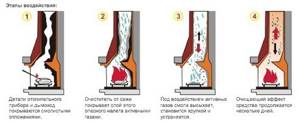
There are special soot cleaners
Important: To prevent the appearance of unnecessary elements, you can install a protective deflector cap on top of the pipe.
We also recommend studying this topic:
Construction of a brick smokehouse: design and construction diagrams
Having decided to set up a corner in your dacha where you can prepare aromatic food, you do not have to purchase small smokehouses presented in specialized stores. You can build a smokehouse with your own hands from brick - a reliable structure that can also become a garden decoration. Drawings and simple step-by-step instructions for performing the work will help you create a model yourself.
43545 0 1
- The presence of soot on the chimney walls is determined. The formation of this substance has an extremely negative effect on traction force. The reason may be improper chimney construction or irregular cleaning.

The appearance of soot after long-term operation without cleaning or the use of low-quality fuel may be the answer to the question of why a potbelly stove smokes at the door.
Smoke is pouring out of the oven: possible causes of the malfunction and their elimination
Despite the fact that in the modern world, wood-burning stoves are gradually giving way to gas and electric appliances, they are still very actively used. Firewood is used for lighting fireplaces, traditional stoves, potbelly stoves, as well as Buleryan stoves. Most often you can find stoves in baths. All these structures have a rather complex structure and require systematic maintenance. A malfunction will be indicated by black smoke coming from the oven. Let's try to figure out why the stove smokes in a bathhouse or living room.
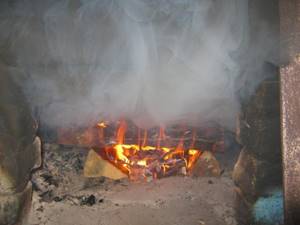
Here it is necessary to separate two problems:
- Smoke is coming from the new furnace;
- The oven has been in use for a long time.
If your brand new stove smokes when lighting, the following reasons are possible:
- If after heating for half an hour there is condensation on the inside of the door, then most likely the oven simply has not dried out completely. In this case, you need to leave it to dry;
- If the stove has dried out, then, probably, there was some flaw in the design of the stove, which led to the fact that smoke from the stove goes into the house. It is better to immediately call a technician to troubleshoot the problem.
There are quite a few reasons why a stove that had always worked properly before suddenly began to smoke when lit.
Smoke in a brick stove
Why does a brick potbelly stove smoke when the door is opened? The reasons largely coincide with the malfunctions of a conventional oven and are eliminated by analogy with it.
Poor quality solution
The use of ordinary cement-sand mortar for ordinary repair work is unacceptable. It does not withstand strong thermal loads and aggressive environmental influences. And carbon monoxide, which will penetrate through the cracks of the masonry, is dangerous to human life. It is prohibited to use the oven in a faulty condition. Eliminating such mistakes results in a complete refurbishment of the furnace or endless cosmetic repairs.
For normal operation of the furnace, the following is required:
- lime mortar - for the foundation and chimney;
- clay;
- masonry sand.
Large seams when laying
The use of old dry bricks or large seams during the construction of a furnace contributes to the rapid destruction of the furnace structure. The adhesion between the materials is initially weakened, cracks appear, which have to be checked and strengthened every season. The same problems occur in new ovens that are not sufficiently dried before use.
Lack of lining
The absence of a lining reduces the maintenance-free service life of brick kilns if the firebox is made of cast iron or steel. The consequences are not critical. Such potbelly stoves are simply inspected more often and any problems that arise are eliminated.
Cracks
The cracks of a brick potbelly stove are first cleaned with a metal brush to a hard brick surface. The space is covered with a margin, especially in the case of a network of cracks.
Cracks in a brick stove
- surface treatment with a primer - cement is diluted with water to a liquid state;
- the solution is applied to the surface;
- cracks are filled with high-quality adhesive or other suitable composition;
- After drying, the surface is plastered and the planned types of finishing work are carried out.
For combustion sections, fire-resistant mixtures and sealants are used;
For the rest - heat-resistant solutions.
Cracks in metal structures are permissible on metal that is not yet subject to fracture, with a width of no more than 5 mm. In these cases, a patch is welded. In other situations, damaged parts must be replaced and the elements must be reassembled.
What needs to be done if smoke appears when lighting a potbelly stove?

To resolve this problem, you can use the following methods :
- a burning candle or torch is brought to the smoke collector, which allows you to eliminate the column of cold air;
- large amount of paper is burned near the smoke collector .
Thanks to the methods described above, the chimney warms up well, and cold air comes out, so if you do all the work correctly, you can get rid of smoke from the stove.
